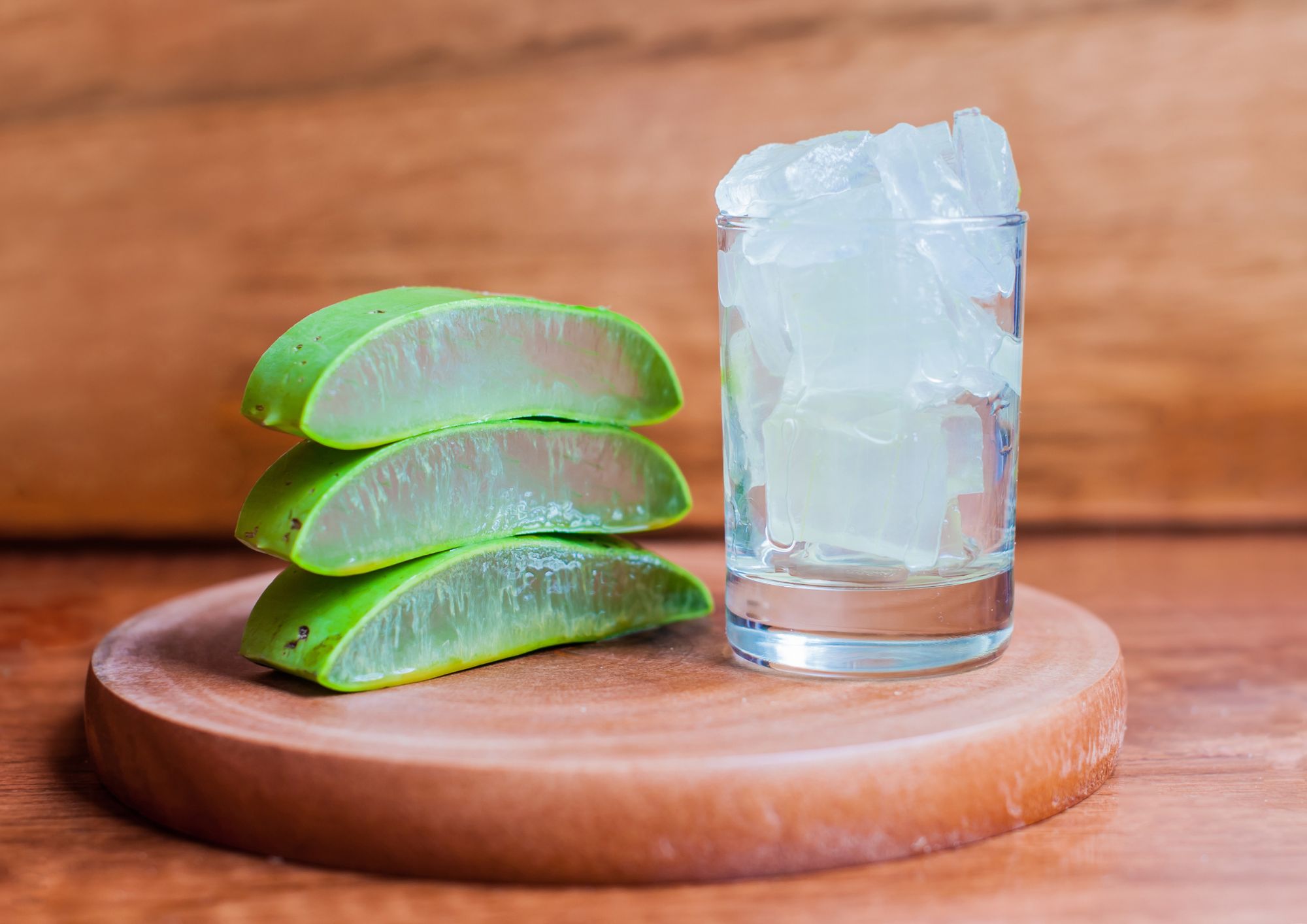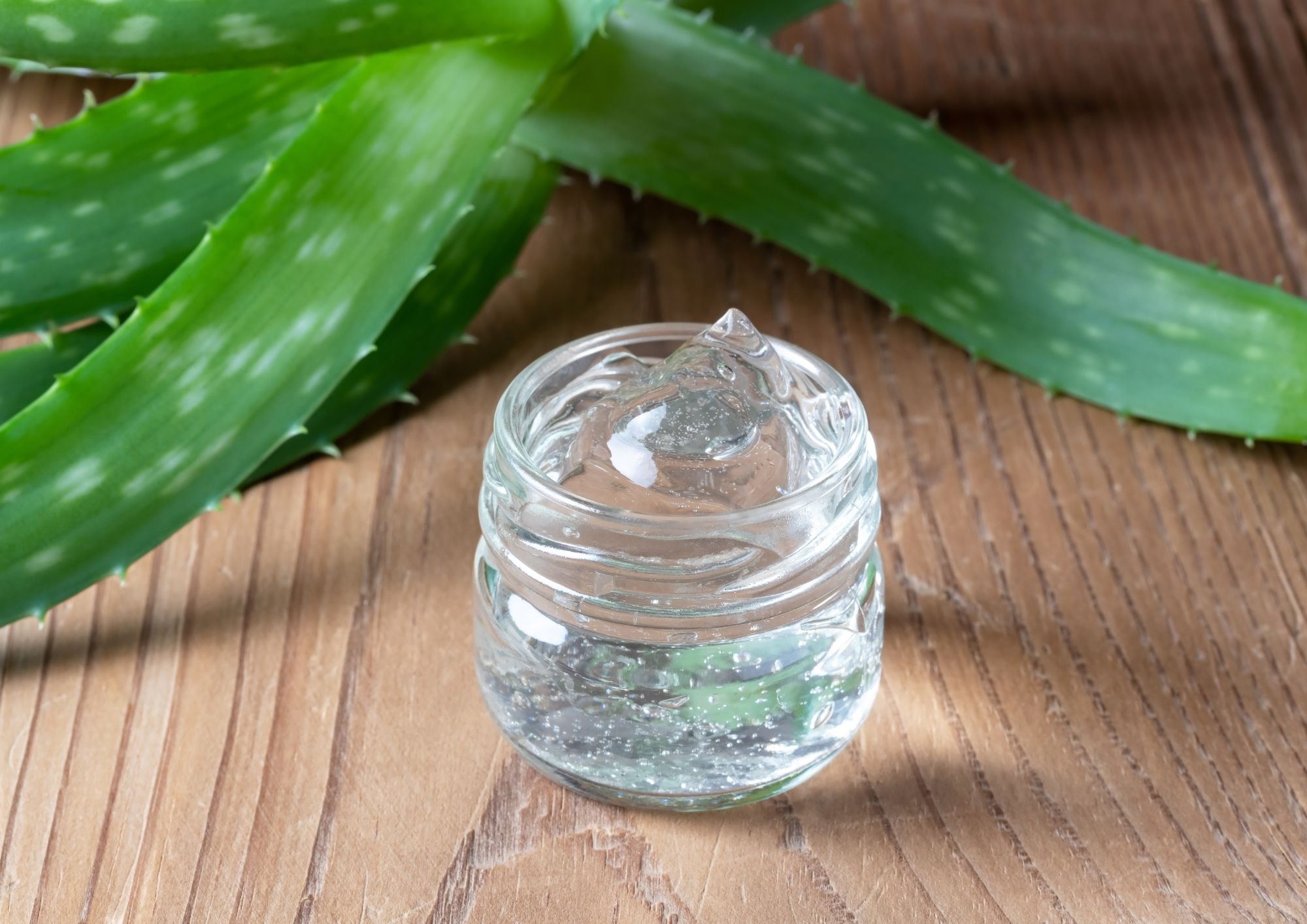Aloe's antibacterial and soothing properties balance oily, blemish-prone skin.
Acne-prone skin requires a specific care approach that combines deep cleansing, regulation of sebum production, and a soothing effect. In this context, aloe vera gel has gained popularity as a natural and effective solution for oily skin with frequent breakouts, blackheads, or persistent inflammation.
Thanks to its antibacterial, anti-inflammatory and healing properties, aloe vera gel It acts as a multi-action treatment that not only relieves active acne but also helps prevent its onset. This article explores in depth why this ingredient is such a powerful ally for this skin type and how to apply it correctly for the best results.

Why is Aloe vera beneficial for oily and acne-prone skin?
Aloe vera is a succulent plant whose leaves contain a transparent gel composed of water, polysaccharides, vitamins, enzymes, and minerals. Its biological profile makes it an exceptional ingredient for problematic skin.
1. Antibacterial properties: Acne is often related to the proliferation of bacteria Cutibacterium acnes (formerly known as Propionibacterium acnes). He aloe vera gelThanks to its content of compounds such as aloin and acemannan, it has an antibacterial action that helps reduce the microbial load on the skin, thus decreasing the risk of infections and inflamed outbreaks.
2. Anti-inflammatory and soothing action: Skin with acne tends to become red, inflamed, and even painful. Aloe vera contains enzymes like bradykinase, which helps break down the proteins responsible for inflammation. Apply aloe vera gel on active pimples or irritated areas visibly reduces swelling and discomfort.
3. Balancing sebum production: Excess sebum is one of the main causes of acne. Unlike many conventional creams, aloe vera gel It does not clog pores and gently regulates sebum production, offering light hydration without generating a comedogenic effect.
4. Stimulates healing without leaving a greasy residue: One of the consequences of acne is the marks or small scars it leaves behind. Aloe vera stimulates cell regeneration and collagen production, improving the skin's appearance and speeding up its recovery. All this without leaving a greasy residue or oily film.
How to properly apply aloe vera gel to acne-prone skin
To take full advantage of the benefits of aloe vera gelIt's key to know how to apply it at the right time and in the right way. Below, we'll show you a recommended routine you can incorporate into your daily care.
Step 1: Deep Cleaning
Before applying any treatment, your skin should be clean. Use a gentle cleanser, specifically designed for oily or acne-prone skin, that won't alter the pH or excessively strip away natural oils. Pat dry with a clean towel.
Step 2: Localized or full-face application
You can apply the aloe vera gel in two ways:
-
PunctualIf you have inflamed pimples, apply a small amount directly onto them as a spot treatment.
-
General: If your skin tends to break out regularly, it is advisable to apply a thin layer of aloe vera gel all over the face, as if it were a serum or light moisturizer.
Step 3: Gently massage and absorb
Spread the gel with your fingertips using gentle circular motions. Don't rub or press too hard. Let it absorb completely before applying other products, such as sunscreen or makeup.
Step 4: Frequency of use
The ideal is to apply the aloe vera gel Twice a day: morning and night. Consistent use is what will make a real difference in your skin's texture and balance.
Can I use aloe vera gel as a mask?
Pyou can use the aloe vera gel as a soothing and purifying mask. This is a very effective way to take advantage of its soothing properties, especially if you have acne-prone or irritated skin.
First, apply a generous layer of aloe vera gel Apply the gel to a clean, dry face. Make sure your skin is free of impurities so the aloe can penetrate properly. Then, let the gel sit for 15 to 20 minutes, allowing its soothing and regenerating properties to take effect. Finally, remove any excess with warm water and gently dry your face with a clean towel.
This treatment is especially useful after sun exposure, during inflammatory flare-ups, or as part of a weekly routine to maintain balanced skin. Its refreshing and purifying action also helps reduce redness and improve skin texture.

How to choose a good aloe vera gel
Not all products on the market are created equal. To ensure you are using a aloe vera gel quality, check these aspects:
-
High concentration of Aloe: Look for formulas with a minimum of 90% of pure Aloe vera.
-
Alcohol and fragrance free: These ingredients can irritate the skin and counteract the benefits of the gel.
-
Light and non-sticky texture: Avoid products with too many thickeners or silicones.
-
Natural or organic certifications: help ensure that the gel comes from clean and sustainable sources.
You can also opt for a homemade gel, extracted directly from the plant's leaf, as long as you take precautions to remove the aloin, a component that can be irritating if not cleaned properly.
What other ingredients can enhance its effect?
He aloe vera gel It can be combined with other ingredients to enhance its action:
-
Salicylic acid: helps exfoliate pores and prevent blackheads.
-
Niacinamide: reduces inflammation and redness.
-
Tea tree oil: antimicrobial and purifying.
-
Zinc: regulates sebum production.
Look for products that integrate these combinations if your skin requires more intensive action without sacrificing the softness of Aloe.
Visible and sustainable results
He aloe vera gel It offers visible and sustainable results thanks to its gentle and progressive action. Since it is non-aggressive, it can be used long-term without damaging the skin barrier, unlike other invasive treatments. With daily application, it reduces the frequency of breakouts, improves overall skin texture, diminishes redness associated with inflammation, and promotes the disappearance of small marks and post-acne spots. The key to achieving these benefits lies in consistency, correct application, and choosing a quality product.

He aloe vera gel It's an excellent option for treating and balancing oily, acne-prone skin. Thanks to its antibacterial, anti-inflammatory, and regenerative properties, it comprehensively addresses the causes and consequences of acne without drying or irritating the skin.
Whether as a spot treatment, part of a daily routine or soothing mask, the aloe vera gel offers a natural, accessible and gentle solution that adapts to the real needs of blemished skin.



